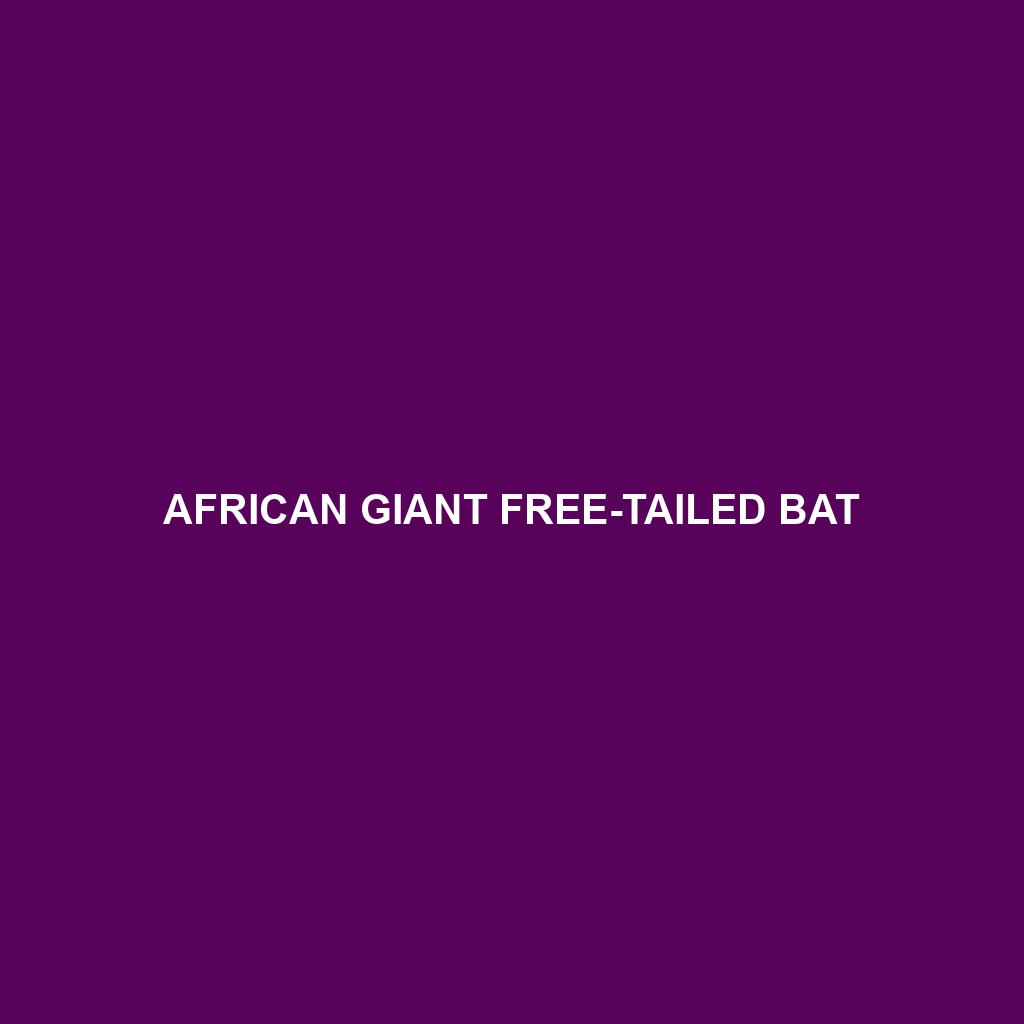Species Description: African Giant Free-tailed Bat
Common Name: African Giant Free-tailed Bat
Scientific Name: Otomops martiensseni
Habitat
The African Giant Free-tailed Bat is primarily found in sub-Saharan Africa, inhabiting countries such as Kenya, Tanzania, South Africa, and Zambia. These bats prefer open savannas, grasslands, and sometimes urban areas where suitable roosting sites are available. They are often found in large caves, abandoned mines, and buildings, favoring areas with ample insect availability.
Physical Characteristics
African Giant Free-tailed Bats are among the largest bats in Africa, with a wingspan that can reach up to 1 meter (3.3 feet). Their bodies are robust, with a length ranging from 10 to 15 cm (4 to 6 inches) and weigh between 40 to 50 grams (1.4 to 1.8 ounces). These bats are characterized by their long, pointed wings and broad tails that extend beyond the tail membrane. Their fur is typically a rich brown color, with lighter underbellies, which helps them blend into their natural environments.
Behavior
This species is known for its highly social behavior, often roosting in large colonies that can number in the thousands. The African Giant Free-tailed Bat exhibits nocturnal tendencies, emerging at dusk to hunt for food. They are fast and agile flyers, capable of reaching speeds up to 160 km/h (99 mph), making them one of the fastest flying mammals. They utilize echolocation to navigate and locate prey effectively in the dark.
Diet
The diet of the African Giant Free-tailed Bat primarily consists of insects, including moths, beetles, and flies. These bats are known to forage over open areas and are particularly adept at catching flying insects mid-air. Their feeding habits significantly contribute to controlling pest populations, making them valuable allies for agricultural practices.
Reproduction
African Giant Free-tailed Bats typically breed once a year, with a breeding season that usually occurs in the warmer months. Females give birth to a single pup after a gestation period of about 3 months. Maternal care is observed, as mothers nurse their young and form crèches, where multiple mothers can care for the offspring together.
Conservation Status
As of the latest assessments, the African Giant Free-tailed Bat is not currently listed as endangered; however, habitat loss due to urbanization and mining activities poses potential risks to their populations. Conservation efforts are necessary to ensure stable populations and protect their habitats from significant human impact.
Interesting Facts
One fascinating fact about the African Giant Free-tailed Bat is its distinctive tail, which can be longer than its body. This feature aids in their swift aerial maneuvers. Additionally, they are capable of impressive nocturnal navigation, allowing them to exploit ecological niches other species may not reach.
Role in Ecosystem
The African Giant Free-tailed Bat plays a crucial role in its ecosystem by acting as a natural pest control agent. By consuming a vast number of insects, they help maintain the balance within agricultural and natural ecosystems. Furthermore, their activities promote plant health and biodiversity, showcasing their importance to the environment.
